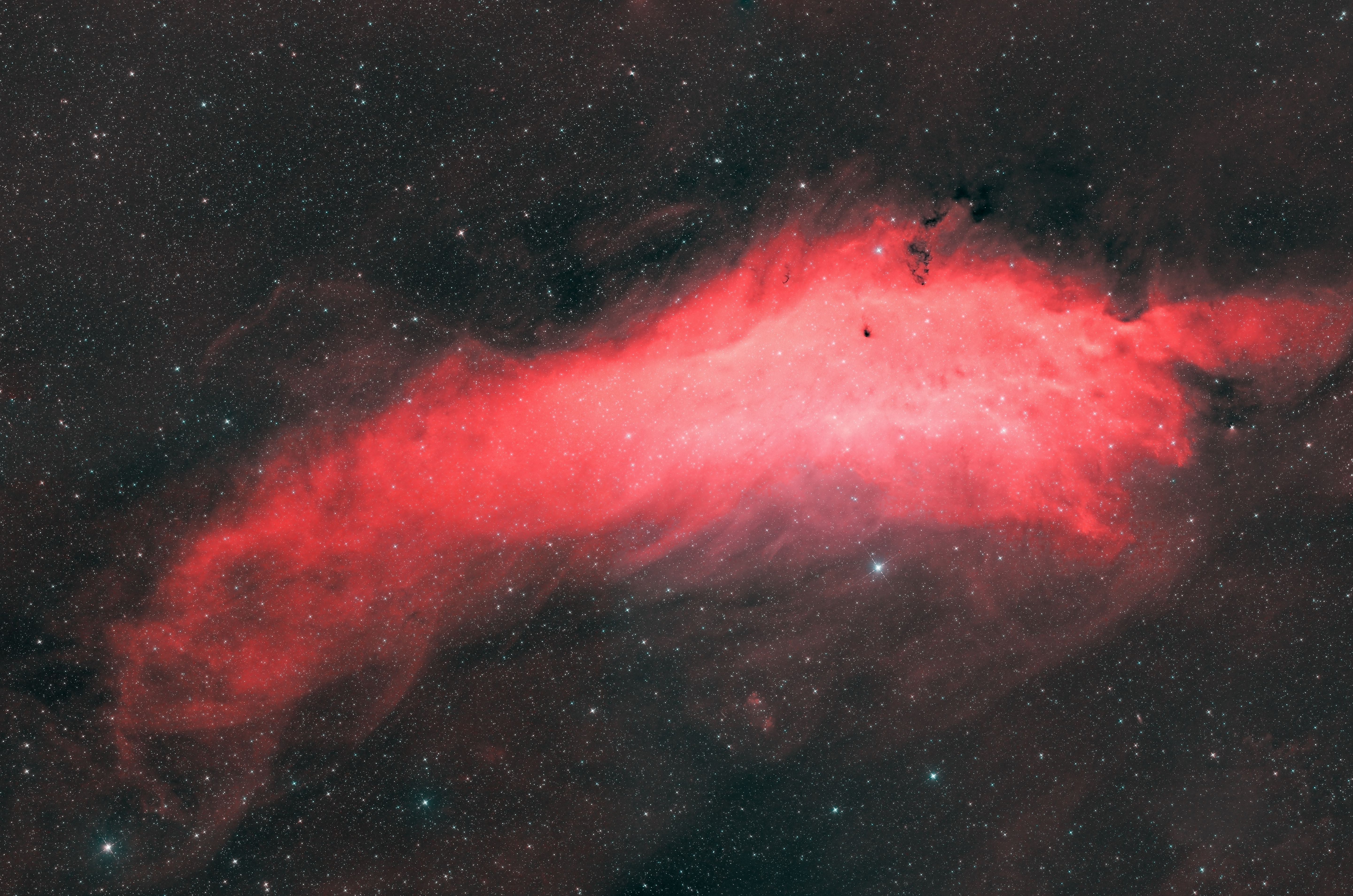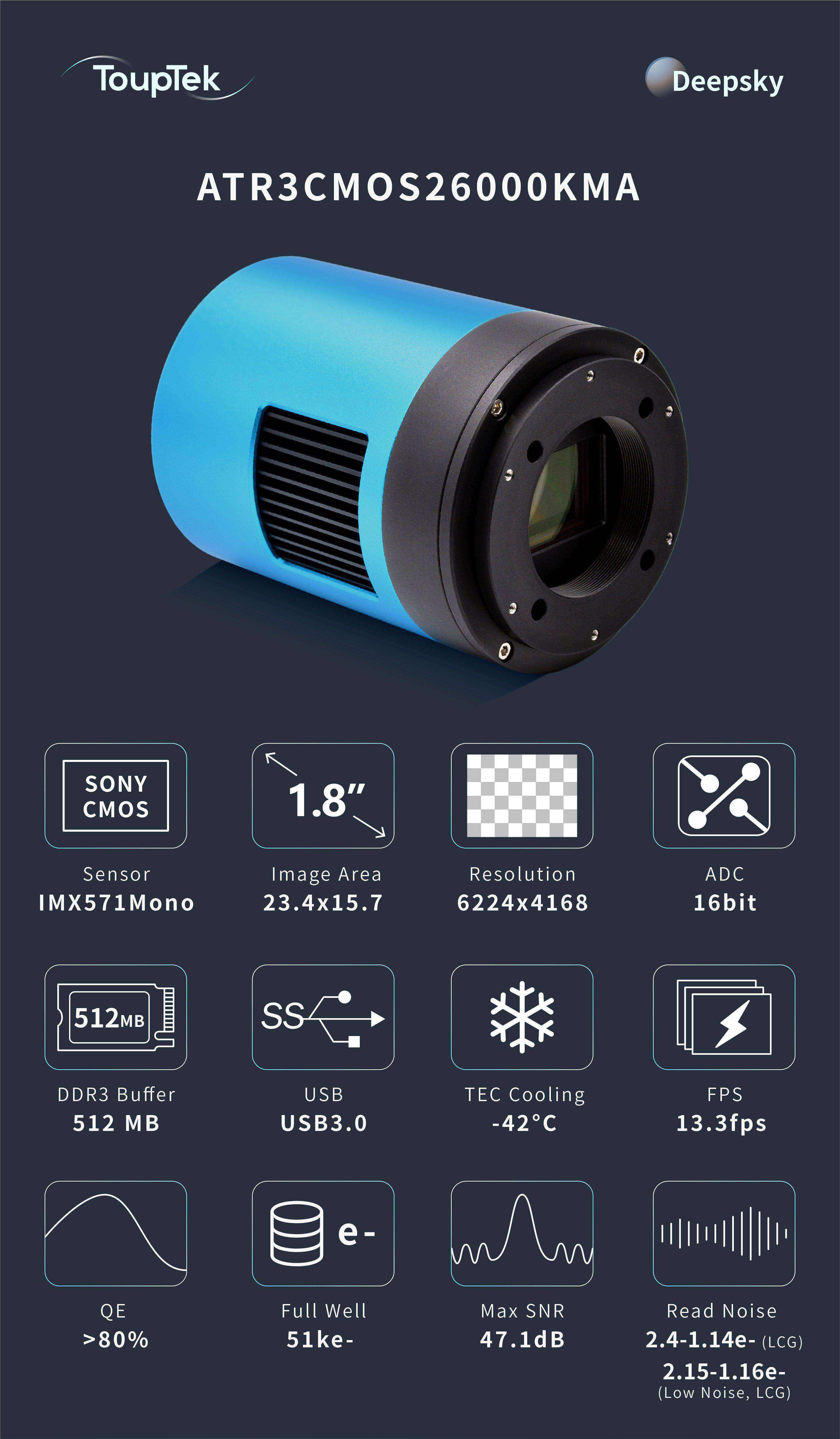Nestled within the boundaries of the constellation Perseus, the California Nebula, also known as NGC 1499, presents a stunning vista for astrophotographers and celestial explorers alike. Its moniker, derived from the nebula's uncanny resemblance to the outline of the US state of California, is only the beginning of its allure. Let's embark on a cosmic exploration to uncover the secrets and splendor of the California Nebula, a testament to the beauty and complexity of the universe.

photographer:有文化的包工头
camera:ToupTek ATR3CMOS26000KPA
Guide Cameras:ToupTek GPCMOS02000KMA
telescope:TakahashiE-130D
Equatorial mount:CEM70
The California Nebula spans roughly 100 light-years, painting a portrait of glowing gases and cosmic dust. Primarily an emission nebula, it glows a fiery red due in part to its hydrogen gas being excited by the intense ultraviolet radiation from nearby stars, notably the bright star Xi Persei (also known as Menkib). This hot, blue supergiant star plays the role of artist, illuminating and shaping the nebula's gaseous canvas. The luminous glow is contrasted by darker regions where dust clouds obstruct the light, creating a dazzling display of interstellar artistry.
The California Nebula is a region of active star formation, a space nursery where newborn stars begin their life journey. As part of the Perseus Arm of our Milky Way galaxy, it is a window into the processes that shaped our own solar system billions of years ago. The dense clouds of hydrogen gas and dust are the raw materials for the birth of stars. Under the influence of gravity, these materials collapse, forming protostars that eventually ignite to become full-fledged stars.
While the California Nebula is a treasure trove for scientific discovery, it can elude the gaze of casual observers due to its low surface brightness. Situated about 1,000 light-years away from Earth, NGC 1499 can be a challenge to spot without the aid of a good telescope and a dark sky free from light pollution. However, with the right equipment and conditions, the nebula reveals itself as a long, narrow cloud, enchantingly dim yet incredibly detailed for those with the patience to look deeper.
For astrophotographers, the California Nebula offers a celestial canvas rich with possibilities. Its vast expanse and intricate details make it an ideal subject for long-exposure images. Through the lens of a camera, the nebula's red hues—emphasized by the use of special filters that isolate the hydrogen-alpha spectral line—can be captured in breathtaking clarity. This visual technique allows hobbyists and professionals alike to share the nebula's grandeur with the world.
The visibility of deep-sky wonders like the California Nebula is increasingly threatened by light pollution. Advocates for dark sky preservation stress the importance of responsible outdoor lighting and the designation of dark-sky parks to protect these treasures for future generations. Observing facilities around the world, often situated in remote locations to minimize artificial light interference, work tirelessly to study objects such as NGC 1499 and to bring their findings to the scientific community and the public.

ToupTek ATR3CMOS26000KMA
The California Nebula, a glowing testament to the enduring processes of star formation and the artistic power of the cosmos, remains a beacon for those who seek the wonders of the night sky. Whether we explore its vast reaches through high-powered telescopes or marvel at its photographic renditions, NGC 1499 serves as a celestial reminder of the universe's timeless creativity and the ongoing story of stellar evolution. It's a cosmic spectacle that inspires astronomers and dreamers alike to keep their eyes on the starry heavens, in search of the next interstellar masterpiece.